#yellow lipped sea krait
Text
Fish of the Day
Today's fish of the day is the yellow lipped sea krait!

The yellow lipped sea krait also called the banded sea krait, or colubrine sea krait, scientific name Laticauda colubrina, is a well known aquatic snake. The range of the yellow banded sea krait is throughout the Indian Ocean and Western Pacific. To be more specific, along the eastern coast of India and then stretching the coasts of the bay of Bengal to all other Southeastern Asian countries with a coast, including as far as Fiji. Although they are not native to Australia or New Zealand, several populations have been found across their coastlines.

These snakes live nearby coral reefs primarily and shallow bay like areas, as their prey is almost exclusively within these areas. Unlike other sea snakes the yellow lipped sea krait spends significant time out of the water, around 50% of its time once it reaches adulthood. Juveniles spend their time almost exclusively in the water, where they will hunt and rest, but once prey is caught they will leave the water to digest on nearby shores. The speed on land is significantly reduced to that in the water, and as such these animals will attempt to remain hidden during these times, presenting a problem for when unsuspecting animals get too close. Other than to digest, the time on land is also spent shedding old skins, and reproducing.

Hunting is done alone, despite large numbers gathering together before and after hunts, and they eat primarily moray eels. This is done by flushing out their prey from narrow crevices and holes, by probing their head in. They then used their striped tail to convince the eel that their tail is their head, tricking them into attempting to flee in the wrong direction, then once the eel is close enough, they strike. Another thing that the yellow barred sea krait is known for is their venom. This venom is a rather powerful neurotoxin protein from the alpha neurotoxin family, which disrupts the synapses, causing paralysis.

The life cycle of the yellow lipped sea krait is regular for sea snakes. Breeding is done throughout September-December on the gently sloping beaches at high tide, where courtship rituals occur. Multiple male snakes will find a female that they consider large enough to successfully carry eggs. Then, they surround her, aligning their bodies as close as possible and contracting rhythmically, until she chooses one of them. After this, she will lay 10 eggs in a clutch, and hide the nest. In adulthood, they can grow up to 3 ft in males, and almost 5ft in females, and have life spans around 20 years.

Have a wonderful day, everyone!
#sea krait#yellow lipped sea krait#Laticauda colubrina#fish#fish of the day#fishblr#fishposting#aquatic biology#marine biology#animal facts#animal#animals#fishes#informative#education#aquatic#aquatic life#nature#ocean
39 notes
·
View notes
Photo

A yellow-lipped sea krait (Laticauda colubrina) returning to the sea in Sabah, Malaysia
by Bernard Dupont
#yellow lipped sea krait#banded sea krait#sea snakes#snakes#reptiles#Laticauda colubrina#Laticauda#elapidae#serpentes#squamata#reptilia#wildlife: malaysia
262 notes
·
View notes
Text

yippee
my info
24 notes
·
View notes
Video
undefined
tumblr
Yellow-lipped sea krait (Laticauda colubrina)
#sea krait#yellow lipped sea krait#laticauda colubrina#marine life#marine animals#aquatic life#aquatic animals#ocean animals#ocean life#sea life#video#animal videos#animal video#animal#animals#nature#wildlife#wild animals
59 notes
·
View notes
Text

INTRODUCING:
The Elemental Serpentine AU!
In this AU, each Serpentine species is getting reworked! They're all getting new, more varied designs, and I'll be making a lot of new species to align with each elemental power in the show!
I'm also reworking much of the lore surrounding Serpentine, since what we are given is inconsistent, and quite vague.
As of now, I have new designs for each of the Serpentine species that appear in the show! Designs for new species to go with the missing elements will come later.
Please note that this AU is a work in progress; the designs I have here are subject to change!
Details about each species are included under the cut~~~
GENERAL AU STUFF
I decided that I want all of my Serpentine to have tails, instead of just the generals. If they have legs, they end up looking more like anthro lizards than anthro snakes. I'll let them keep the arms, though.
In the show, the Serpentine are covered in intricate details. As nice as these details are, they make it difficult to draw Serpentine in 2D. So, more for my own sanity than anything else, the patterns are getting toned down.
CONSTRICTAI - EARTH
I genuinely hate a lot of aspects of the canon design for the Constrictai. Their non-existent necks and random spikes make them look more like horrible little dinosaur gnomes than snakes. For my design, I let them keep the spikes, but moved them so they weren't sticking straight up out of their head. Most important of all, I gave them necks.
Inspiration: Boa constrictor
HYPNOBRAI - MIND
In spite of how it may seem, I did not remove this species' hood! Real snakes with hoods only 'hood up' as a threat display. I decided to incorporate this into my AU. It's not visible here, but my design has false eyes on the back of the hood. I noticed that the original design has snakes in the patterns, so I've incorporated that in a few places. I think I may have gone too far with simplifying their design, so we'll see how it changes as I continue to iterate.
Inspiration: Spectacled cobra
VENOMARI - POISON
This one has received some of the biggest changes in the AU. I felt the Venomari's extra eyes looked quite out of place in my new lineup, since it would be the only one out of a now larger number of species to have four eyes, so I lowered the number to two. I don't like the original colour scheme all that much, so I decided to take a page out of the poison dart frog book and make them bright and varied in colour. They can have a variety of colours and patterns. Like the Hypnobrai, the Venomari have a hood that can't be seen in this image.
Inspiration: African bush viper
FANGPYRE - FORM
I changed the shape of the head pretty drastically, but the colours are the same, even if the pattern is different.
Inspiration: Coral snake
ANACONDRAI - LIGHT
The colour-changing ability of the Anacondrai is so underutilized that I literally forgot about it until I started rewatching the show with my brother, so I've decided to make it more prominent. In this AU, Anacondrai change colour as a method of communication and expression. They can also change their colour to disappear, just like in the show.
Inspiration: Green anaconda, RainWings from the book series Wings of Fire
VERMILLION - FUSION
Each of the Serpentine are born or hatched without visible limbs, appearing as ordinary snakes to the untrained eye. While most species undergo a metamorphosis at a young age, emerging with two limbs, Vermillion do not, and remain in a larval state for their entire lives.
Inspiration: Garter snake, axolotl
MAARAY - WATER
According to the fan wiki for Ninjago, these guys are supposed to be eels, but I thought they were Serpentine when watching the show, and they have the same head model as some of Aspheera's lackeys, so I've made the executive decision to make them Serpentine in this AU.
Inspiration: Yellow-lipped sea krait
#ninjago#ninjago serpentine#ninjago constrictai#ninjago hypnobrai#ninjago venomari#ninjago fangpyre#ninjago anacondrai#ninjago vermillion#ninjago maaray#ninjago elemental serpentine au#crying over art#btw PLEASE google some of the snakes i used as inspo they are so beautiful#especially the african bush viper and yellow-lipped sea krait
34 notes
·
View notes
Text
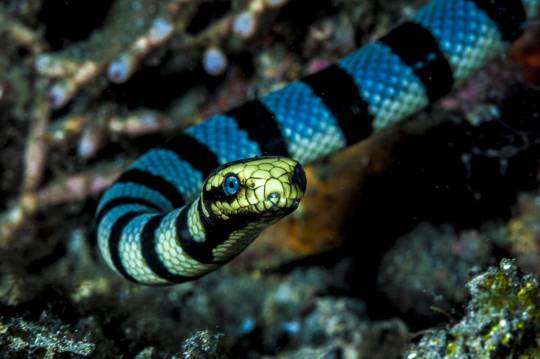
Banded Sea Krait aka Yellow-lipped Sea Krait (Laticauda colubrina), family Elapidae, South Pacific
Venomous.
photograph by Giordano Cipriani
903 notes
·
View notes
Text
the yellow lipped sea krait is literally alex kralie. guys. look at it. the color scheme....
ANDANDAND NOT ONLY THAT!! But yellow lipped sea kraits are known to have extremely toxic venom which fits really well with Alex canonically having the highest kill count in the series... Not to mention they're also generally considered a non-aggressive species unless threatened... JUST LIKE HOW ALEX WASN'T AGGRESSIVE UNTIL UNDER THE INFLUENCE OF THE OPERATOR!!! idk idk im losing my mind i may delete this idk what im writint
OH OHOHOHOHHHHH AS SOMEONE IN A SERVER IM IN POINTED OJT.... KRAIT AND KRALIE ARE SPELT RLLY SIMILAR AAAAGJJJH TJAYS SOPERFECT

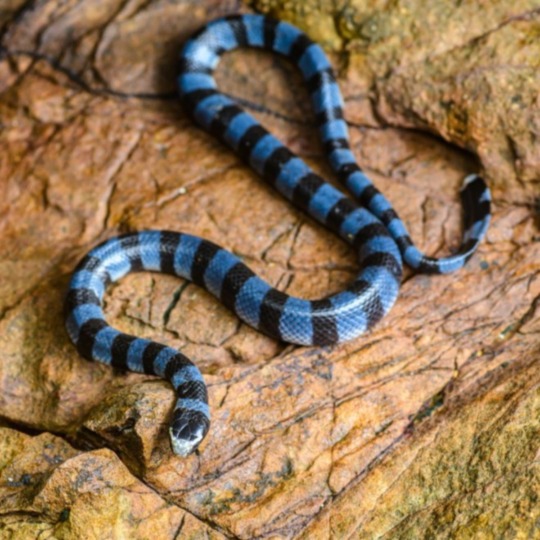
#these snakes are a pain in the ass to research btw#marble hornets#alex kralie#alex marble hornets#slenderverse#snakes
81 notes
·
View notes
Note
Happy pride month every day I think about how yellow lipped sea kraits have the same color pallette as the aroace flag
happy pride 🏳️🌈🌈 I see what u mean haha have a silly meme :3

credits:
yellow lipped sea krait image
aroace flag image
32 notes
·
View notes
Text
Aroace pride flag color picked from a picture of a yellow lipped sea krait

[IMAGE ID: a yellow lipped sea krait, which is a blue snake with black stripes, a white belly, and a yellow head, sat on the beach. Next to the snake is the aroace pride flag, which is illustrated in shades of yellow, white, and blue that have been color picked from the snake. END ID]
30 notes
·
View notes
Text
Good evening to the poor unfortunate souls who will see this post because today it is LANKMANN HEADCANONS day
thanks to this post in particular by @havoc-bloom go see it immediately what are you still doing here
Anyway. Every Veldigun has some kind of animal features, and yea Lankmann is not one but he's mimicking the form of what one could look like, and personally I've always associated Arg Lankmann (not dr. Lankmann) with sea creatures. Why?
First of all, for one of Lankmann's key features that the other Pastra characters don't have:
a SECOND Set of RETRACTABLE glowing red teeth. My dude really wants to remind us he's a predator. You know who else has this feature? Mostly sea creatures, the prime example being the moray. He even looks somewhat like one with his yellow skin when he dislocates his entire jaw just to smile.
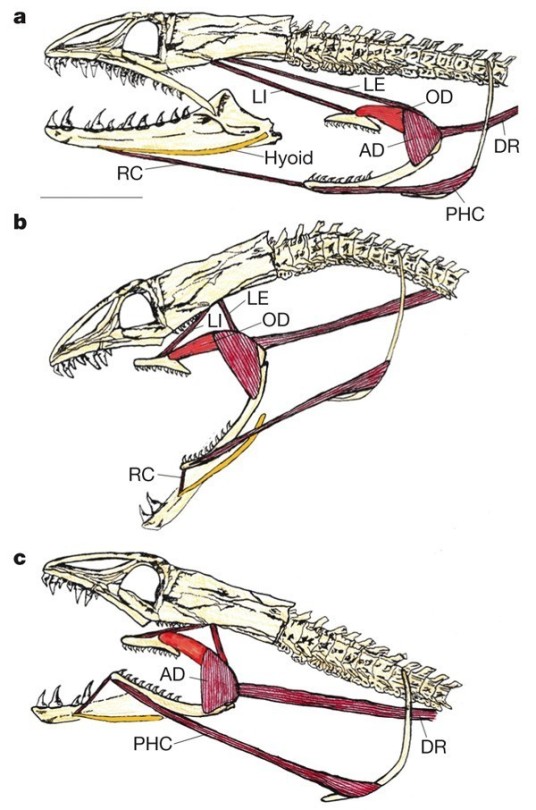

And also I mean look at this motherfucker. This is the Zebra moray eel and could be Lankmann's cousin.
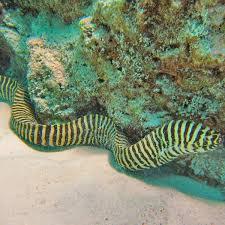
Other sea creatures I associate him with are the Yellow-lipped sea krait and the Mimic octopus. The first for obivious reasons, it's a sea snake with the iconic black & yellow stripes (which by the way is one of the most venomous snakes in the world) ; the second in a more simbolic way:
the ARG Lankmann is technically a creature who's mimicking the design of Dr Lankmann's hallucination form from the old DOAI lore. So yeah mimic behavior
has multiple names picked from Pastra's previous unfinished ARGs and and is using them as his own without permission, with Lankmann being the most used one. So yeah still mimic behavior
his body proportions are all over the place. Like you cannot find 2 sprites of his that have the same body shape, it's like he's a black blob that can stretch and squash at will, unlike Clyde and Simon's sprites who are much more proportioned. One could say that's standard veldigun behavior but as we established he's not a real veldigun
small horns above their eyes ewe I've seen some people draw Lankmann with small horns
tentacular hands. Do I need to say more

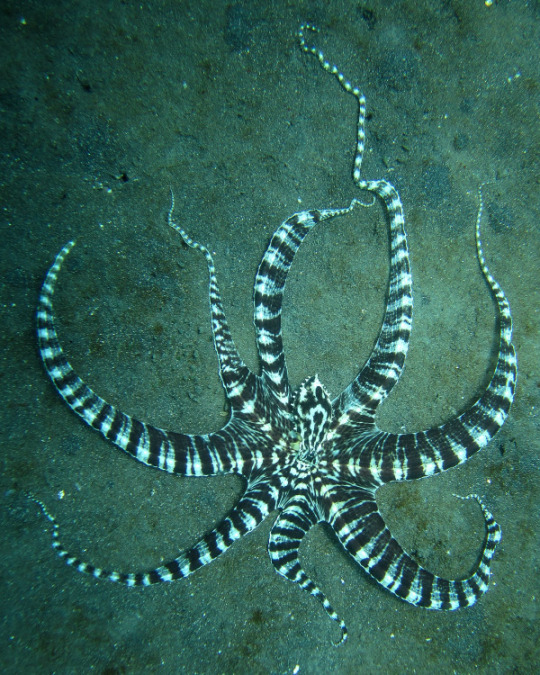
Yes I know Lankmann's form was the product of his features and mask distorted by Winfrey's collective hallucination and to understand his real inspirations one should analize Winfrey's mind, this is just fun headcanons.
So yeah, Vincent Network Lankmann with octopus/snake/moray inspo OwO
#if yall disagree with me it's ok I haven't looked that deep into it#and I'd love to know others' headcanons ewe#lankmann#pastra#veldigun#pastraspec#arkaix talks#I'm rambling at this point don't take me seriously
132 notes
·
View notes
Text
I would like to offer this resource for therians, an extensive list of all of Sir David Attenborough’s nature documentaries that are available on soap2day, and a full list of what species* they each (notably, prominently) feature the natural behaviors of, separated by episode, and omitting species that were only shown dead, juvenile or being predated on. This took me a while (I have been working on it since Prehistoric Planet’s release) because I did in fact have to watch every single series in full in order to list all the species and the episodes are around 50 minutes long, but enjoy.
Long post ahead:
Most of these shows have closed captioning, which is why I’ve picked soap2day. Planet Earth is the only one that doesn’t. I did not include Dynasties and Dynasties II because each episode only features one species.
Thank you to Birch (@ambiguousmutt) for his help (he watched about half of the episodes) so I didn’t have to do it individually. Credit goes to him as well.
*Sometimes Attenborough doesn’t say the specific species and I was too busy trying to get through the episodes to identify it. In those cases I just put the most specific name I could.
Planet Earth
Episode one (From Pole to Pole): emperor penguin, polar bear, caribou, arctic grey wolf, Amur leopard, six-plumed bird-of-paradise, superb bird-of-paradise, great white shark, African elephant, African buffalo, lechwe, baboon, African wild dog
Episode two (Mountains): gelada, walia ibex, Ethiopian wolf, guanaco, cougar, grizzly bear, markhor, snow leopard, golden eagle, grey wolf, panda, golden snub-nosed monkey, red panda, demoiselle crane
Episode three (Fresh Water): giant salamander, grizzly bear, smooth-coated otter, Nile crocodile, dolphin fish, midge, Amazon river dolphin, dorado, piranha, spectacled caiman, crab-eating macaque, snow goose
Episode four (Caves): wrinkle-lipped free-tailed bat, cockroach, bat hawk, cave swiftlet, yellow-red rat snake, Texas blind salamander
Episode five (Deserts): Bactrian camel, dromedary camel, red kangaroo, fennec fox, guanaco, long-nosed bat, Nubian ibex, flat lizard, lion, African elephant, locust
Episode six (Ice Worlds): snow petrel, Antarctic petrel, south polar skua, humpback whale, emperor penguin, eider, muskox, arctic grey wolf, polar bear, little auk, arctic fox
Episode seven (Great Plains): Mongolian gazelle, red-billed quelea, wildebeest, snow goose, arctic fox, arctic grey wolf, bison, wild ass, Tibetan fox, pygmy hog, African elephant, lion, baboon
Episode eight (Jungles): magnificent bird-of-paradise, spider monkey, howler monkey, siamang gibbon, gliding tree frog, colugo, red crab spider, African elephant, chimpanzee
Episode nine (The Shallow Seas): humpback whale, multiple corals, banded sea krait, trevally, dugong, bottlenose dolphin, Socotra cormorant, salp, comb jelly, sea lion, dusky dolphin, sea urchin, sunflower starfish, short-tailed stingray, great white shark, king penguin, fur seal
Episode ten (Seasonal Forests): Eurasian lynx, moose, crossbill, wolverine, western capercaillie, pine marten, great grey owl, pudu, kodkod, mandarin duck, cicada, red deer, Amur leopard, tiger, mouse lemur
Episode eleven (Ocean Deep): whale shark, oceanic whitetip shark, common dolphin, Cory's shearwater, manta ray, sea spider, vampire squid, spider crab, unnamed deep sea eel, giant isopod, chambered nautilus, Pacific spotted dolphin, mola mola, frigatebird, sailfish, blue whale
Planet Earth II
Episode one (Islands): pygmy three-toed sloth, Komodo dragon, sifaka, marine iguana, Galapagos racer, Buller's albatross, fairy tern, Christmas Island red crab, yellow crazy ant, chinstrap penguin
Episode two (Mountains): Nubian ibex, red fox, golden eagle, grizzly bear, bobcat, flamingo, mountain viscacha rat, snow leopard
Episode three (Jungles): spider monkey, flying lizard, sword-billed hummingbird, river dolphin, jaguar, glass frog, paper wasp, click beetle, red bird of paradise, Wilson's bird of paradise, indri
Episode four (Deserts): lion, Harris's hawk, shrike, locust, sand grouse, pale chanting goshawk, feral mustang, golden mole, desert long-eared bat, darkling beetle, Namaqua chameleon
Episode five (Grasslands): saiga antelope, lion, harvest mouse, carmine bee-eater, Kori bustard, African elephant, serval, Jackson's widowbird, grasscutter ant, compass termite, giant anteater, bison, red fox, arctic grey wolf
Episode six (Cities): langur, peregrine falcon, leopard, European starling, great bowerbird, raccoon, rhesus macaque, spotted hyena, wels catfish
Our Planet
Episode one (One Planet): lesser flamingo, orchid bee, golden-collared manakin, red-capped manakin, blue manakin, cormorant, booby, common dolphin, shearwater, African wild dog, timber wolf
Episode two (Frozen Worlds): gentoo penguin, wandering albatross, narwhal, Pacific walrus, humpback whale, orca, leopard seal, polar bear
Episode three (Jungles): lowland gorilla, forest elephant, black sicklebill, twelve-wired bird-of-paradise, western parotia, mountain treeshrew, Philippine eagle, black spider monkey, leafcutter ant, Sumatra orangutan, velvet worm
Episode four (Coastal Seas): northern fur seal, compass jellyfish, giant trevally, mobula ray, Atlantic stingray, bottlenose dolphin, grey reef shark, whitetip reef shark, sea otter, California sheephead wrasse, Steller's sea lion, bald eagle, humpback whale, Guanay cormorant, Inca tern, Peruvian booby, South American sea lion
Episode five (From Deserts to Grasslands): Socotran cormorant, Arabian leopard, Arabian oryx, African elephant, cheetah, bison, Alcon blue butterfly, saiga, Przewalski's wild horse, tiger
Episode six (The High Seas): blue whale, spinner dolphin, mobula ray, oarfish, anglerfish, bristle worm, giant petrel, black-browed albatross, wandering albatross, bluefin tuna, sea lion, humpback whale
Episode seven (Fresh Water): Australian pelican, torrent duck, grizzly bear, manatee, giant mayfly, common kingfisher, osprey, jaguar, callipterus cichlid, Siamese fighting fish, hippopotamus, lion, African elephant, sandhill crane
Episode eight (Forests): Siberian tiger, bald eagle, rough-skinned newt, great hornbill, African elephant, African wild dog, fossa, gray mouse lemur
A Perfect Planet
Episode one (Volcano): lesser flamingo, marabou stork, Galápagos land iguana, vampire ground finch, Aldabra giant tortoise, North American river otter, coyote, Kamchatka brown bear, wildebeest
Episode two (The Sun): yellow-cheeked gibbon, fig wasp, arctic grey wolf, wood frog, garter snake, arctic fox, Saharan silver ant, golden snub-nosed monkey, sooty shearwater, humpback whales
Episode three (Weather): straw-colored fruit bat, fire ant, Amazonian giant river turtle, desert rain frog, Bactrian camel, Christmas Island red crab, carmine bee-eater, Nile crocodile, African fish eagle, hippopotamus
Episode four (Oceans): common dolphin, marine iguana, flightless cormorant, flamboyant cuttlefish, eider, bottlenose dolphin, lemon shark, manta ray, blacktip reef shark, trevally, rockhopper pengin, Eden's whale
Episode five (Humans): none
Life
Episode one (Challenges of Life): bottlenose dolphins, cheetah, panther chameleon, orca, brown-tufted capuchin, stalk-eyed fly, hippopotamus, Clark's grebe, giant Pacific octopus, strawberry poison-dart frog, leopard seal, orangutan
Episode two (Reptiles and Amphibians): pebble toad, caiman, basilisk, Brazilian pygmy gecko, panther chameleon, Namaqua chameleon, red-sided garter snake, collared iguana, hog-nosed snake, horned lizard, sea krait, African bullfrog, Komodo dragon
Episode three (Mammals): Weddell seal, elephant shrew, aye-aye, caribou, straw-colored fruit bat, lion, spotted hyena, polar bear, brown-nosed coati, meerkat, African elephant, humpback whale
Episode four (Fish): sailfish, flying fish, weedy sea dragon, convict fish, sarcastic fringehead, mudskipper, Hawaiian freshwater goby, hippopotamus, barbel, silvertip shark, clownfish, sea lion, ragged tooth shark, multiple snapper, whale shark
Episode five (Birds): spatuletail hummingbird, lammergeier, red-billed tropicbird, magnificent frigatebird, red knot, horseshoe crab, lesser flamingo, chinstrap penguin, great white pelican, Clark’s grebe, sage grouse, Vogelkop bowerbird
Episode six (Insects): Darwin’s beetle, unnamed damselfly, monarch butterfly, alkali fly, Wilson’s phalarope, oogpister beetle, mongoose, bombardier beetle, honey bee, black bear, Japanese red bug, Dawson’s bee, grass cutter ant
Episode seven (Hunters and Hunted): ibex, short-tailed stoat, brown bear, Ethiopian wolf, California ground squirrel, star-nosed mole, cheetah, red fox, greater bulldog bat, bottlenose dolphin, Bengal tiger, rattlesnake, orca
Episode eight (Creatures of the Deep): Pompeii worm, Humboldt squid, nemertean worm, moon jelly, fried egg jellyfish, spider crab, stingray, cuttlefish, giant Pacific octopus, sunflower sea star, king crab, cleaner shrimp
Episode nine (Plants): monarch butterfly, purple-throated carib hummingbird
Episode ten (Primates): Hamadryas baboon, Japanese macaque, lowland gorilla, spectral tarsier, phayre's leaf monkey, ring-tailed lemur, Sumatra orangutan, chacma baboon, white-faced capuchin, brown-tufted capuchin, western chimpanzee
Blue Planet II
Episode one (One Ocean): bottlenose dolphin, tuskfish, tern, giant trevally, mobula ray, false killer whale, Asian sheepshead wrasse, orca, humpback whale, walrus
Episode two (The Deep): sea toad, Venus’ flower basket, unnamed shrimp, ethereal snailfish, cock-eyed squid, pyrosome, barrel-eyed fish, unnamed siphonophore, yeti crab, Humboldt squid, fangtooth fish, sixgill shark, scabbardfish, zombie worm
Episode three (Coral Reefs): broadclub cuttlefish, coral grouper, day octopus, multiple corals, green turtle, bottlenose dolphin, manta ray, bobbit worm, saddleback clownfish, marbled grouper, grey reef shark
Episode four (Big Blue): spinner dolphin, yellowfin tuna, mobula ray, sailfish, sperm whale, sea turtle, blue shark, great white shark, multiple jellyfish, Portuguese man o' war, whale shark, wandering albatross, shortfin pilot whale
Episode five (Green Seas): Garibaldi, Australian giant cuttlefish, weedy seadragon, common octopus, pyjama shark, sea otter, tiger shark, smooth stingray, zebra mantis shrimp, common dolphin, humpback whale
Episode six (Coasts): Pacific leaping blenny, king penguin, southern elephant seal, Sally Lightfoot crab, Galápagos sea lion, ochre starfish, clingfish, chain moray eel, Atlantic puffin, arctic skua
Episode seven (Our Blue Planet): none
Prehistoric Planet
Episode one (Coasts): Tyrannosaurus rex, Tethydraco, Phosphatodraco, Tuarangisaurus, Mosasaurus hoffmannii, pycnodont fish, ammonites, Kaikaifilu
Episode two (Deserts): Dreadnoughtus, Tarbosaurus, Velociraptor, Mononykus, Barbaridactylus, Secernosaurus
Episode three (Freshwater): Velociraptor, Tyrannosaurus rex, Deinocheirus, Quetzalcoatlus, Masiakasaurus, Beelzebufo, elasmosaur
Episode four (Ice Worlds): dromaeosaur, hadrosaur, Ornithomimus, Olorotitan, troodontid, Antarctopelta, Pachyrhinosaurus, Nanuqsaurus
Episode five (Forests): Austroposeidon, Triceratops, Carnotaurus, Qianzhousaurus, Edmontosaurus, Atrociraptor, Anodontosaurus, Therizinosaurus, Telmatosaurus, Hatzegopteryx
The Hunt
Episode one (The Hardest Challenge): African leopard, African wild dog, Parson’s chameleon, nose-horned chameleon, African mantis, Darwin’s bark spider, Nile crocodile, Amur falcon, orca, cheetah
Episode two (Arctic): polar bear, arctic grey wolf, arctic fox, glaucous gull
Episode three (Forests): tiger, American marten, sparrow hawk, Portia spider, tarsier, harpy eagle, chimpanzee, army ant
Episode four (Oceans): blue whale, frigatebird, dorado, sargassum fish, spinner dolphin, Beroe ovata, Chiroteuthis, lionfish, black-browed albatross, sea lion, tuna, copper shark, common dolphin, Bryde's whale
Episode five (Plains): cheetah, caracal, honey badger, termite, bald eagle, lion, Ethiopian wolf, hotrod ant, spoor spider
Episode six (Coasts): bottlenose dolphin, algae octopus, sand bubbler crab, long-tailed macaque, marine otter, grizzly bear, grey wolf, peregrine falcon, orca, humpback whale
Episode seven (Conservation): none
Life In Colour
Episode one (Seeing In Color): Indian peafowl, mandrill, Costa’s hummingbird, magnificent bird-of-paradise, blue moon butterfly, fiddler crab, mantis shrimp, flamingo, poison dart frog
Episode two (Hiding In Color): Bengal tiger, langur, ptarmigan, crab spider, zebra, Cuban painted snail, blue-striped fangblenny, common waxbill, pin-tailed wydah, Augrabies flat lizard
Frozen Planet II
Episode one (Frozen Worlds): emperor penguin, orca, Pallas’s cat, Siberian tiger, grizzly bear, hooded seal, polar bear
Episode two (Frozen Ocean): polar bear, beluga, harp seal, skeleton shrimp, crested auklet, orca
Episode three (Frozen Peaks): high-casqued chameleon, japanese macaque, kea, andean flamingo, giant panda, golden eagle, andean mountain lion
Episode four (Frozen South): king penguin, Antipodean wandering albatross, blue whale, Weddell seal, chinstrap penguin, snow petrel, leopard seal, orca
Episode five (Frozen Lands): grey wolf, arctic fox, Amur leopard, Siberian tiger, painted turtl, Lapland bumblebee, snowy owl, caribou, grizzly bear
Episode six (Our Frozen Planet): none
Africa
Episode one (Kalahari): fork-tailed drongo, ostrich, black rhinoceros, Angolan giraffe, African leopard, armored ground cricket, spider wasp
Episode two (Savannah): Agama lizard, shoebill, bee-eaters and rollers, lesser flamingo, African elephant, crowned eagle, African fish eagle, martial eagle
Episode three (Congo): chimpanzee, central African rock python, Angola banana frog, African skimmer, rockfowl, African elephant
Episode four (Cape): emperor swallowtail, giant kingfish, African penguin, monkey beetle, springbok, yellow-billed kite, pied crow, ghost crab, vundu catfish, Nile crocodile, Bryde’s whale, great white shark, common dolphin
Episode five (Sahara): Grevy’s zebra, naked mole rat, barn swallow, Dromedary camel, dung beetle, crocodile, western yellow wagtail, Saharan silver ant
Episode six (The Future): none
541 notes
·
View notes
Text
In honor of mermay I have drawn the main trio of Camp Camp!

Max is a betta fish, Nikki is a leopard shark, and Neil is a harbor porpoise :D
(Let’s say that this is magical merperson water that both salt and fresh water creatures can live in)
This was supposed to be a silly low effort doodle but I found a new brush and chaos ensued
Because the creativity demons have taken me, I plan to hopefully draw the rest of the Camp Camp characters and maybe some others this month!
(Let’s see how long I last lmao)
Here’s the full list of the species everyone is:
Max- betta fish
Neil- harbor porpoise
Nikki- leopard shark
Harrison- mimic octopus (✨illusion✨)
Nerris- narwhal
Preston- koi (taisho sanke)
Space kid- harp seal
Nurf- Maine lobster (calico mutation)
Dolph- mudskipper (periophthalmus malaccensis)
Ered- yellow lipped sea krait (sea snake)
Jasper- ghost shrimp
David- North American river otter
Gwen- Galapagos sea lion
Quartermaster- electric eel (electrophorus varii)
Campbell- saltwater crocodile
CJ- marine iguana
Daniel- giant river otter
Pikeman- pacific spiny dogfish (sometimes called the piked dogfish lol)
Billy/snake- king snake eel (ophichthus rex)
Petrol- redtail catfish
Jermy- sargassum fish (frogfish)
Penelope Priss (garden mother/flower scouts leader)- zebra lionfish
Sasha- Randall’s pistol shrimp
Erin- dumbo ear guppy
Tabii- lined seahorse (yellow)
-
I have never spent so much time researching aquatic life, I’m going insane. Why can’t I ever get involved in things a normal amount.
(trick question, the answer is ✨neurodivergence✨)
#art#my art#camp camp#camp camp fanart#cc max#max camp camp#camp camp max#max cc#camp camp neil#cc neil#neil camp camp#neil cc#cc nikki#camp camp nikki#nikki camp camp#nikki cc#mermaid#merman#mermay 2024#merpeople#merfolk#digital art#illustration#mermay#camp camp merpeople
21 notes
·
View notes
Text
Happy Wavecrest Saturnalia!
The second to last fest of the cycle! This one really snuck up on me, but I think I'm enjoying it nonetheless- here are my thoughts:
Familiar
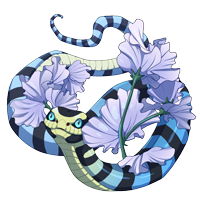
She's a cutie! And a yellow-lipped sea krait with venom more powerful than a rattlesnake's, so uh. Be careful.
Jokes aside, she really is pretty- I like the wavelike petals of the sweet peas, and the contrast of the yellowish face against the blues and purples is just wonderful.
Apparel
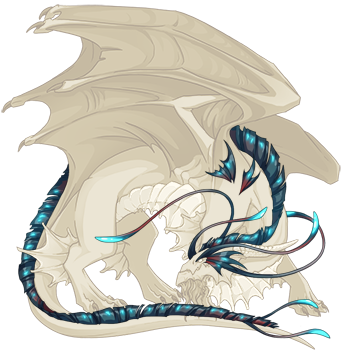
When I first previewed this I audibly said "Oh fuck yeah." Because look at it! Fuck yeah! This combines some of my favorite water-themed apparel, and I think it's incredible. I want a million recolors of it, in every colors of the rainbow.
Gene

I think this gene is one of my favorites. Maybe not as much as Trickmurk, but the combination of fins and waves is stunning. It matches Primal so perfectly, and the dual colors is incredible. Oh it's pretty. I love it.
Joxar Recolor
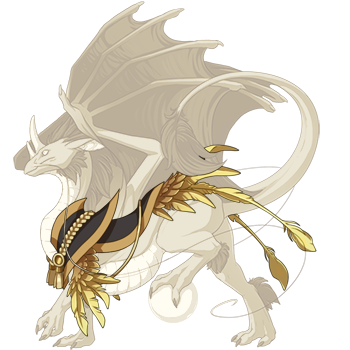
I like it! I don't have much to say about it beyond that, but it is good. Bottom text.
Favorite skin: Acquarian Lily

The colors and detail is beautiful and all, and the lighting on the water reminds me of Ghibli movies, and the pot itself is lovely, but I'm a simple girl. I see lily of the valley, I go apeshit.
That's all! Happy Wavecrest yall!
9 notes
·
View notes
Photo

Found a doodle in my sketchbook of my gorgon boiz. Ajamu the coral gorgon and Gitonga the Yellow-lipped sea krait gorgon. mmm his snake beard! Decided to slap some color on it instead of letting it rot in my sketchbook. Enjoy!
#asmtsm art#digital art#Digital Illustration#digital coloring#digital artwork#mixed media#drawn trad first then colored digitally#gorgon#monsterboy#monster boy#trans#transmen
72 notes
·
View notes
Text

Pokemon Challenge 2024! #1090 S'neke.
S'neke is a Poison/Water type based on the yellow-lipped sea krait which visits New Zealand from the warmer Pacific Islands. The Māori name for them is neke (ne-kay) and I was delighted by how neatly that became a pokemon name. I think this little guy is so friend-shaped. There are very few poisonous creatures in New Zealand so it was fun finding such a good noodle to draw.
Find the rest of the Te'Roa set in my master post!
#art#my art#pokemon#pokemon challenge 2024#new zealand#pokemon art#fakemon#snakes#poison type#water type#pokemon land and sky
9 notes
·
View notes
Note
If it's not too big a task, might I ask for one reptile for each color of the rainbow? 🌈
A Rainbow of Reptiles...
In celebration of Pride!!!

Blue-lipped Sea Krait (Laticauda laticaudata), family Elapidae, Batanes region of the Philippines
Venomous.
photograph by @rupertsreptiles

Kuhl’s Anglehead Lizard (Gonocephalus kuhlii), family Agamidae, found in Java and Sumatra, Indonesia
photograph by Marshall Sastra (@marshallsastra.jpeg)

Eyelash Viper (Bothriechis schlegelii), family Viperidae, Costa Rica
Venomous.
The yellow color variant of this snake is often called the Oropelia.
photograph by Greg Lasley

Sahara Mastigure aka Geyr’s Dabb Lizard (Uromastyx geyri), family Agamidae, found in north Africa
photograph by Manfred Werner

Black-banded Trinket Snake aka Red Bamboo Snake (Oreocryptophis porphyraceus coxi), family Colubridae, from NW Thailand
This subspecies is sometimes referred to as the Red Mountain Rat Snake.
photograph by Julian Rossi

Sunbeam Snake (Xenopeltis unicolor), family Xenopeltidae, Thailand
photograph by Parinya Herp Pawangkhanant
The iridescence of this snake is the closest I'm getting to a purple herp!
361 notes
·
View notes